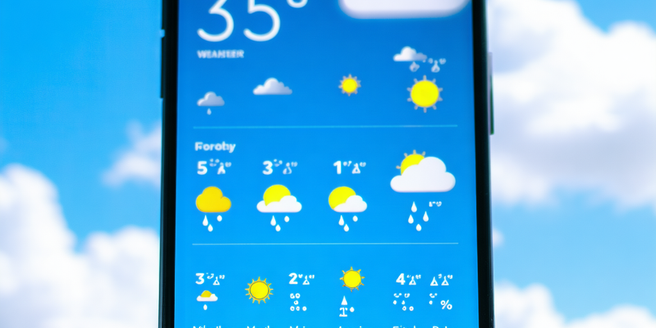
What Makes a Great Weather App?
A great weather app combines accuracy, user-friendly interface, and a wealth of data to help users make informed decisions. It should provide real-time updates, detailed forecasts, and customizable alerts to keep users aware of changing conditions. The app’s design should be intuitive, allowing users to easily navigate through features like radar maps and hourly updates. Incorporating localized and global perspectives can enhance its relevance, offering insights into local weather patterns and broader climate trends. A good app should also prioritize data integrity, sourcing information from reputable organizations and using advanced models for predictive accuracy. Ultimately, a great weather app is one that seamlessly integrates into users’ lives, enhancing their ability to plan and adapt to the weather around them.
Understanding Climate Insights: Why They Matter
Climate insights provide crucial information about long-term weather patterns and environmental changes. They help us understand the broader context of daily weather phenomena, revealing trends that can influence agriculture, urban planning, and disaster preparedness. These insights are instrumental in crafting policies that address climate change impacts, aiding in sustainable development. By analyzing temperature shifts, precipitation trends, and extreme weather events, we gain a deeper understanding of how global and local climates are evolving. Access to reliable climate data equips individuals, researchers, and policymakers to take proactive measures in mitigating adverse effects. Thus, comprehending climate insights is not only about predicting tomorrow’s weather but about preparing for the challenges and opportunities of the future.
Top Features to Look for in Weather Apps
When choosing a weather app, it’s essential to prioritize features that enhance usability and data reliability. Key features include precise forecasting tools that offer hourly and daily predictions, interactive radar maps for tracking weather patterns, and push notifications for severe weather alerts. Apps with customizable interfaces allow users to tailor the information according to their needs, such as changing measurement units or location preferences. Incorporating sunrise and sunset times, air quality indices, and pollen levels can further enrich the user experience. The ability to access past weather data and climate insights adds an educational dimension. Additionally, the app should be optimized for performance, ensuring it runs smoothly without consuming excessive data or battery power.
Comparing Popular Weather Apps: Pros and Cons
Evaluating popular weather apps reveals a variety of strengths and limitations that cater to different user preferences. Apps like The Weather Channel and AccuWeather are praised for their comprehensive forecasting and high reliability, offering detailed insights and robust radar features. However, they often have extensive ads that may disrupt the user experience. In contrast, apps like Dark Sky and Weather Underground are lauded for their hyper-local forecasting and sleek design, but they may lack the extensive features of bigger competitors. Ad-free options like Carrot Weather offer a unique take with humorous commentary but come with a subscription. Understanding these pros and cons is vital to choosing an app that aligns with personal needs, balancing functionality and user experience.
How to Use Weather Apps for Climate Education
Weather apps can be powerful tools for climate education, providing accessible data that illuminates broader environmental concepts. Educators can use them to teach students about the science behind weather patterns and climate change. By analyzing real-time data, students can observe phenomena such as precipitation patterns, temperature fluctuations, and extreme weather events, fostering a practical understanding of theoretical concepts. Apps featuring historical climate data allow for discussions on long-term trends and the impact of human activity on the environment. Engaging with these apps encourages curiosity and critical thinking, empowering individuals to make informed decisions about sustainability and resilience. Harnessing technology in this way turns daily weather updates into valuable lessons on planet stewardship.
